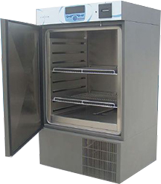Sterilization is a cornerstone of safety and hygiene in healthcare, ensuring that medical devices are free from harmful microorganisms. Among the various sterilization methods, Ethylene Oxide (ETO) gas sterilization stands out as a critical process, particularly for complex medical devices.
Its unique properties make it indispensable for maintaining the sterility and functionality of intricate, heat-sensitive instruments. This article delves into the importance of ETO sterilization, focusing on its role in handling complex medical devices and why it is considered a gold standard in the healthcare industry.
Understanding Ethylene Oxide Gas Sterilization
Ethylene Oxide (ETO) is a colorless gas with potent sterilization properties. It effectively eliminates bacteria, viruses, and fungi, even in challenging conditions. ETO gas sterilizers operate at low temperatures, making them ideal for materials and devices that cannot withstand high-heat sterilization methods such as autoclaving.
Why Complex Medical Devices Require ETO Gas Sterilization
Medical devices today are more advanced and intricate than ever before. Devices like catheters, pacemakers, and endoscopes often contain components made from materials like plastics, polymers, and delicate electronics. These devices pose unique sterilization challenges:
- Sensitivity to Heat and Moisture: Traditional sterilization methods such as steam or dry heat can wrap or damage sensitive components.
- Complex Design: This indicated shapes and enclosed spaces of many devices make it difficult for conventional methods to reach all surfaces.
- Material Compatibility: Many modern medical devices are made from materials that are not compatible with high-temperature or chemical-intensive sterilization processes.

ETO gas sterilizers solve these problems by offering a method that is both gentle and thorough, ensuring that even the most complex devices are effectively sterilized.
How Ethylene Oxide Gas Sterilizers Work?
The ETO sterilization process involves multiple stages to ensure thorough sterilization:
- Preconditioning: Items are exposed to specific humidity and temperature levels to prepare them for gas exposure.
- Gas Exposure: Ethylene oxide gas is introduced into the sterilization chamber. The gas penetrates deep into the devices, reaching all surfaces, even in intricate designs.
- Sterilization Phase: The gas remains in the chamber for a specified period, ensuring complete microbial elimination.
- Aeration: Residual gas is removed from the devices, making them safe for use.
Key Advantages of ETO Gas Sterilization
Penetration Capability
Ethylene oxide gas has the remarkable ability to penetrate materials such as plastics, rubber, and paper. This ensures that it can reach microorganisms hidden in crevices or within sealed packaging, making it especially suitable for complex devices.
Compatibility with Heat-Sensitive Materials
ETO sterilization operates at low temperatures (typically between 30°C and 60°C), preserving the integrity of materials that could be damaged by high-heat methods. This makes it ideal for devices made from polymers, electronics, or composite materials.
Broad Spectrum Efficacy
ETO gas sterilizers are effective against a wide range of microorganisms, including bacteria, viruses, and fungal spores. This comprehensive sterilization capability ensures the highest level of safety for patients and healthcare providers.
Applications of ETO Sterilization in Healthcare
ETO gas sterilization is widely used for:
- Surgical Instruments: Complex tools with intricate designs that require precise sterilization.
- Medical Implants: Devices like pacemakers and stents that are sensitive to heat and moisture.
- Single-Use Devices: Items such as syringes, catheters, and IV sets that need to be sterilized before packaging.
The Role of ETO Gas Sterilizers in Advancing Medical Technology
As medical technology evolves, the demand for sterilization methods that can handle advanced and complex devices grows. ETO gas sterilizers enable the safe and effective sterilization of these devices, supporting innovation and ensuring patient safety.
ETO Sterilizers in Global Healthcare
Ethylene oxide gas sterilizers are utilized by healthcare facilities and manufacturers worldwide. From hospitals to industrial-scale production facilities, they are a critical component in the supply chain for sterile medical products.
Challenges and Considerations for ETO Gas Sterilization
- Residual Gas Removal: Proper aeration is essential to remove residual ethylene oxide from devices, ensuring they are safe for use.
- Environmental Concerns: Ethylene oxide is a volatile compound, and its use requires strict adherence to safety and environmental regulations. Modern sterilizers incorporate advanced gas recovery and filtration systems to mitigate these concerns.
- Cost: ETO sterilization equipment and processes can be more expensive than traditional methods, but their ability to sterilize complex devices often justifies the investment.
Selecting the Right Ethylene Oxide Gas Sterilizer
When choosing an ETO gas sterilizer, consider the following factors:
- Chamber Size: Match the chamber capacity to the volume of devices that need to be sterilized.
- Automation and Controls: Advanced systems with automated cycles and real-time monitoring ensure precision and safety.
- Compliance: Ensure the sterilizer meets international standards for sterilization processes.
- Support and Service: Partner with a reputable manufacturer or exporter who provides comprehensive support and maintenance.
Future of ETO Sterilization
As healthcare demands continue to grow, the role of ETO sterilization in ensuring the safety of complex medical devices will only become more critical. Innovations in sterilizer design, automation, and environmental sustainability are set to enhance the efficiency and applicability of this vital technology.
Conclusion
Ethylene oxide sterilization is an essential process for complex medical devices, offering unparalleled efficacy and compatibility with sensitive materials. Its ability to address the unique challenges posed by intricate designs and heat-sensitive components makes it indispensable in modern healthcare. By investing in advanced ETO gas sterilizers and adhering to best practices, medical facilities and manufacturers can ensure the highest standards of safety, hygiene, and patient care.






